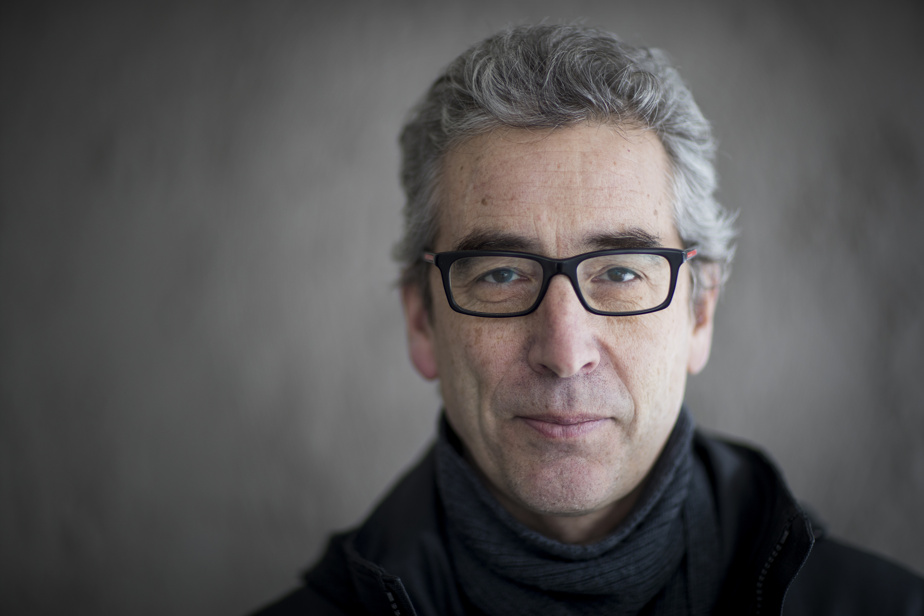Vaccination often achieves “herd immunity”, meaning that unvaccinated people are protected because a disease is no longer circulating in society. However, in the case of COVID-19, despite advances in vaccination, it may never be achieved.
Posted on May 22, 2021 at 12:00 a.m.
–
–
What is collective immunity

PHOTO MARCO CAMPANOZZI, THE PRESS
Benoît Mâsse, epidemiologist at the University of Montreal
–
Initially, a year ago, we were talking about collective immunity in a context where there was no treatment or vaccine against COVID-19, recalls Benoît Mâsse, epidemiologist at the University of Montreal. “It was mentioned in Sweden, which did very little confinement with the idea of achieving collective immunity faster,” said Mâsse. But ultimately, the proportion of people infected remained very low even in Sweden. With the great effectiveness of vaccines, we started talking about collective immunity again. With many infectious diseases, an infected or vaccinated person can no longer catch or transmit the disease. The virus almost stops circulating. So, if 80% of the population is immune to a virus, four out of five people will not get sick after coming into contact with an infected person. The group immunity threshold varies greatly from one virus to another: from 50% for viruses that are less contagious to 90% for those that are more contagious. In Quebec, the Legault government estimates that the complete vaccination of 75% of the population aged 12 and over by the end of August would achieve collective immunity to COVID-19.
The effects of hesitation
Vaccination hesitation, which prompts some not to be vaccinated, plays a role in the achievement of collective immunity. For the moment in Quebec, the vaccination campaign is going well. For example, among those aged 60 and over, vaccination rates exceed 85% in all age groups for the first dose. All over the world, however, some groups are more hesitant about vaccines. “In the United States, everything that happened with Tuskegee’s experience on the treatment of syphilis makes African Americans very suspicious,” observes Maryse Guay, a vaccination specialist at the University of Sherbrooke. Vaccination against COVID-19 is no exception. In the 1930s, the US government recruited 600 African Americans from Alabama to provide treatment for several illnesses. In fact, they inoculated them with syphilis, in an attempt to document the natural course of the disease.
Vaccination of caregivers
Another point of concern is the vaccination rate below 80% among health workers, or even below 60% in certain categories of retirement homes in Quebec. Since April, the Department of Health and Social Services has forced caregivers who refuse vaccination to be tested three times a week. “If they are on leave, they have to go to the test at their own expense,” says Dre Guay. We have anecdotal data showing that it has an effect. That said, vaccination against COVID-19 in the healthcare sector is superior to that against influenza, which is often below 50%.
What about travel?
Even if a country has reached the herd immunity threshold, outbreaks of a disease can occur due to travel to countries where the virus is still circulating. “Of course, talking about group immunity in the context of a world where we travel a lot is different,” says Andrés Finzi, virologist at the University of Montreal. For example, a measles outbreak in Quebec in 2011 was linked to a traveler from France, which since 2019 has been one of the countries at risk for this disease according to the Centers for Disease Control and Prevention (CDC) of the US government, due to a strong vaccine hesitation in the country of Molière. A vaccination passport could limit the risks associated with travel.
The mystery of variants
The group immunity threshold increases with the degree of contagion of a virus. However, some variants of COVID-19 are 50% to 100% more transmissible than the original strain, notes Mâsse. “We were talking about collective immunity with 70% of the vaccinated population, but with the variants, it is 80%, 90%. Mr. Finzi also notes that a vaccine resistant variant could appear, which would wipe out herd immunity. “At the moment, the variants are only resistant to one layer of the immune response, so the vaccines are just as effective. But we can not say if it will continue like this. However, there are fewer new variants when the virus circulates less thanks to strong vaccination. “This is why it is really important for vaccination to be global,” says Finzi.
Measuring the effectiveness of the vaccine
Glimmer of hope, American researchers are working on a test that would estimate the immune response to a vaccine. “That way, we could know right away if it worked,” said Mâsse. And we could give another vaccine to a patient who is not protected. US researchers are comparing the levels of different antibodies in people who received Moderna’s vaccine, to see if they are different in those who subsequently had COVID-19 and in those who did not get sick.
In numbers
The vaccination threshold to achieve collective immunity for different diseases
COVID-19: between 70% and 90% (estimate)
Measles: between 83% and 95%
Smallpox: between 85% and 90%
Chickenpox: between 70% and 85%
Source: University of Montreal
–
–



